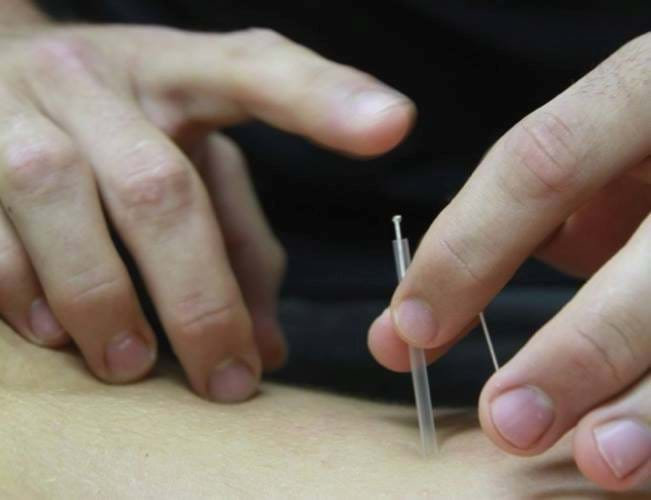Myotherapy
Myotherapy is a form if physical therapy focusing on the assessment, treatment and prevention of soft tissue pain and dysfunction.
The three main goals of Myotherapy are to:
- decrease pain
- increase mobility within the joints of the body
- restore function
These three points are achieved by the stimulation and deactivation of myofascial trigger points that are found within dysfunctional muscles. These MTrPs are hyper-irritated points located within a taut band of muscle, often referred to as a ‘knot’.
Myotherapy is aimed at identifying the source of your pain in order to treat the problem, rather than just your symptoms.
A Myotherapist has the following tools to offer:
Dry Needling:
Dry needling is the insertion of fine needles into myofascial trigger points, aimed at deactivating these points to decreased pain and restore muscle function. Dry needling is performed safely by a myotherapist who has obtained a comprehensive knowledge of anatomy and physiology, and can sometimes involve little to no pain for the patient.
Dry needling is one of many modalities of myotherapy, and if there is any concern or if you do not wish to receive dry needling, please advise your myotherapist.
Cupping:
Cupping is a technique which may be incorporated into your treatment, where the myotherapist will use a vacuum pumped cup to mobilise and stretch the connective tissue which lies between the skin and the muscles of the body. This connective tissue is called “fascia”, which can sometimes become tight and limit the function of certain muscles. The cups may be moved around the site of tightness, or left in one spot.
Joint Mobilisation:
A joint mobilisation can best be described as a movement performed on a joint by a practitioner which can be controlled by the patient at all times. It is when a practitioner applies a gentle rhythmic force to a particular joint in order to assess the accessory movement within a joint, and to try and increase this level of movement.
What are the common conditions that are treated?
Myotherapy can be used to treat a wide variety of conditions, most commonly those which involve pain, a loss of movement and a loss of function. Some of these conditions include:
- headaches
- shoulder pain with movement
- elbow pain (tennis elbow/golfers elbow)
- carpal tunnel syndrome
- lower back pain
- sciatica (sharp pain running down the legs)
- hip pain
- knee pain and instability
- plantar fasciitis
What is the difference between dry needling and acupuncture?
The type of needles and insertion method of these needles are the same, however the main difference between dry needling and acupuncture is the insertion location. An acupuncturist will place their needles in pre-determined acupuncture points aimed at aiding the “qi” energy flow, whereas a myotherapist will target their needles at a myofascial trigger point in a particular muscle.
How long is a consultation?
An initial consultation will run for 60 minutes. Subsequent follow up consultations will be either 30 or 60 minutes, depending on the individual patient’s needs.
What is involved in a consultation?
An initial consultation will involve a brief history, thorough assessment including the testing of posture, mobility, functional movement and orthopedic testing, explanation of your condition and what is going on within your body, and then treatment including the use of massage, dry needling, cupping, joint mobilisation and finally some exercise prescription and correction.
Subsequent consultations will still involve some assessment to check the progress of your condition, treatment, and then ongoing exercise prescription that will be tailored to you.
Will health insurance cover me?
This will depend on your private health provider, as well on your level of cover. Myotherapy and Remedial Massage generally fall under the same category, and we recommend you contact your health provider if you are unsure about cover.
